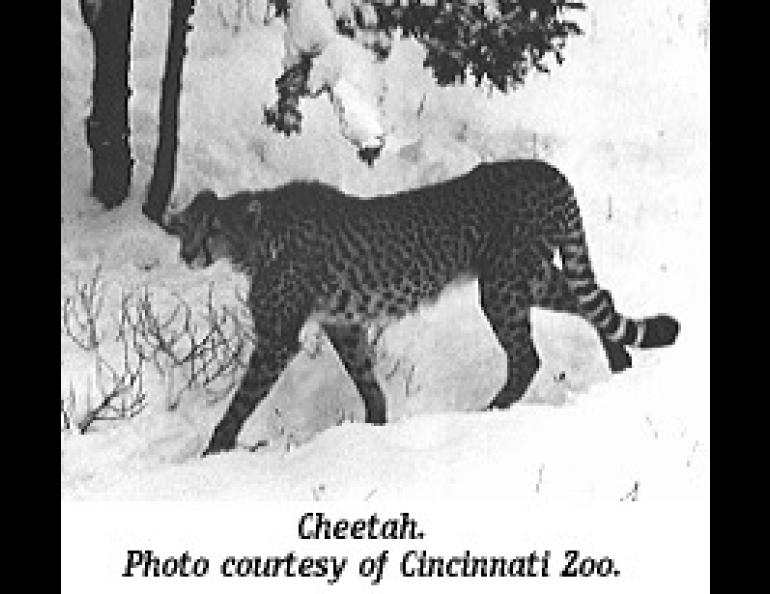
Cheetahs and Soybeans
Pity the poor cheetahs! These speedy spotted cats managed to survive one population crisis, which left them the most inbred wild animal known. Then human inroads on their habitat and hunting for their fur shoved them toward a second population crisis, which seemed headed off by captive breeding. Now it appears that the zoo diet in North America is simultaneously killing them off with liver disease and preventing them from breeding effectively.
In 1985, 29 American zoo cheetahs died and only 18 were born, and 7 of the 18 died before adulthood. Only about 10% of North American adult female cheetahs have been producing live cubs in the last 5 years, compared with 60 to 80 % in other countries.
Since North American cheetahs mostly eat a commercial feline diet based on horsemeat and soy, while the cheetahs living and breeding more successfully elsewhere are being fed whole carcasses, a group of researchers in Ohio decided to look at the zoo cheetah's food. They found that the soybean part of the diet (the same textured soy protein and soy flakes used increasingly as a meat extender in human diets) contained natural plant estrogens, chemicals akin to mammalian female hormones and having some of the same effects. When these chemicals were injected into immature female mice, they caused damage to the mice's uteruses.
Experiments were carried out at the zoo as well as in the lab. When four cheetahs in the Cincinnati Zoo were switched to a diet based on chicken meat without soy, their liver function improved. Right now we don't know whether they will breed again or whether permanent damage has occurred.
What does this mean in terms of other soy consumers? Cheetahs are likely to be exceptionally sensitive to problems of any kind because they are so inbred. On the other hand, soy made up a relatively small percentage of the cheetahs' diet, and apparently all cats are rather poor at getting rid of extra estrogens. Our pets might face some problems.
A quick scan of supermarket dog and cat food labels indicates that about half of the commercial dry pet foods have soy as the main protein source, with soy appearing as the first ingredient after corn or (in some very high protein products such as kitten food) as the first ingredient. As a dog breeder I would hesitate to maintain my breeding stock on a commercial diet that used soy as the primary protein source, or listed soy as one of the top three ingredients. But other questions need to be answered, as well.
How about the human consumption of soy? At the present time, our western diets don't contain all that much soy, though what they do contain is often in the form of textured soy protein, which has over twice the estrogen content of soy flakes. This in itself indicates that the method of preparing soy may affect the estrogen content of the final food. Oriental diets have used soy for far longer than have Western ones. Do traditional Oriental methods of preparing soybeans for consumption remove some of the plant estrogens? I asked one of the researchers, and he replied that tofu has far less plant estrogens per unit weight than does textured soy protein. No measurements had yet been made, however, based on the ratio of estrogens to protein.
Agriculturists and plant breeders need to look at soybean estrogens, too. Do drought, temperature, soil fertility or day length affect their concentration? Do different varieties of soybeans differ in how Umuch of these substances the beans contain? Can low-estrogen varieties be developed?
The cheetah study has raised more questions than it has answered -- not an uncommon result of scientific research!





